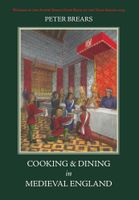Advertisement
Planning Meals
By Peter Brears
Published 2008
Although not well represented in medieval records, there is substantial evidence for a continuous tradition of gathering wild foods through to the early twentieth century. Nettles were widely used for making broths and pottages, along with bistort (‘passion dock’ or ‘Easter ledges’), sorrel, wild garlic (‘ramsons’), mushrooms and many other herbs. In the spring, the fresh leaf-buds of the hawthorn were nibbled – I still do this, being taught by my grandfather; they were known as ‘bread and cheese’ – as were the sweet bases of clover flowers. Late summer and autumn then brought wild strawberries, blackberries, bilberries (‘whortleberries’) and a variety of nuts. Wild birds are likely to have been eaten too, using nets or bird-lime made from holly-bark to take anything from a sparrow to a rook. Wild birds’ eggs were also eaten, especially those of seabirds collected from the high east-coast cliffs. Even so, it would have been difficult for anyone to have survived as a hunter-gatherer in medieval England; without, that is, recourse to farmed animals or crops, and prohibited the game they might otherwise have pursued. In Piers Plowman, when the established resources failed, Hunger fiercely attacked the unprepared Waster:1

